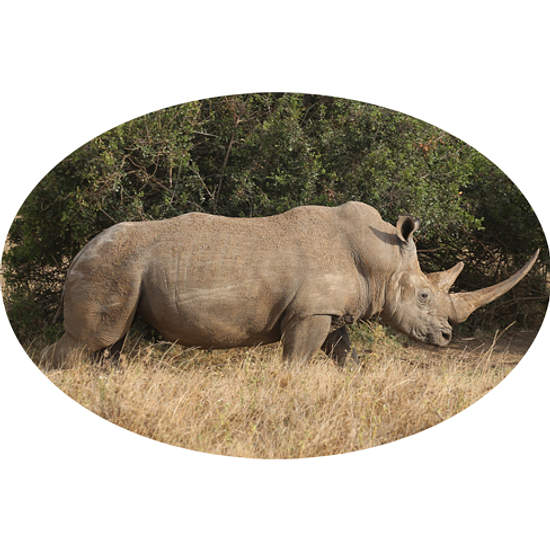
Species we protect
Species we protect
African White Rhino
Today, rhino horn poaching is the main threat facing rhinos as demand has escalated in Asian countries, especially in Vietnam. Despite having no proven medicinal value and made of keratin, rhino horn has long been used in traditional medicines but in recent years, it has been incorrectly touted as a cure for ailments ranging from hangovers to treatment for cancer as well as status symbol.
Fun facts
White rhinos are the second largest land mammal after the elephant.
White rhinos are grazers that use their flat lip to cut and eat grass.

White Rhinos they can weigh over 3500kg and are heavier than Black Rhinos.
Despite their size and weight, White Rhinos are surprisingly fast and can run up to 40 km/h for short periods.
Rhinos need our protection now more than ever
-
2022
548 rhinos killed for their horns
Knowing the Rhinos
White rhinos have complex social structures and can form groups, notably females with calves. A female’s home range usually overlaps several males’ territories and both sexes uses scent through dung posts to communicate and mark boundaries. White rhinos can also communicate vocally, using a wide range of sounds from calf squeaking to snarling or wailing of adults. Grunting between black rhino groups has also been observed as a form of communication.
Whilst they may be black and white in name, African rhinos are actually grey.
Rhinos can be easily distinguished by the shape of their lips. A black rhino has a hooked lip whilst a white rhino will have a square lip. Black rhinos have less of a pronounced hump on the back of their necks.
Horns are used by rhinos as weapons during confrontations and for protection. They may also be used during encounters with other rhinos to demonstrate dominance or make a threat display. Whilst rhino calves are both without horns, a stub will appear from the age of one-two months and will continue to grow into a distinctive horn shape throughout a rhino’s lifetime.
The gestation period for a rhino is 15-17 months and at birth, calves can weigh around 30-45kg. Calves will suckle for up to one year and will remain with their mothers for 2-4 years or until a female is ready to calve again.
Rhinos are vital to keeping ecosystems in balance which means by protecting Africa’s rhinos, we protect other species too. As mega-herbivores, white rhinos have been described as ‘selective lawnmowers’ and help maintain grasslands, selectively grazing on certain grass species promoting biodiversity. Black rhinos also eat many woody plants which results in more grasses growing for the benefit of other animals.
Find out how the Sheldrick Wildlife Trust is helping Africa's rhinos
Anti-Poaching
Ground teams, accompanied by a canine unit, protect wildlife from illegal activities.
See ProjectMobile Veterinary Units
Six teams and one Sky Vet Unit treat tens of rhino cases each year.
See ProjectAerial Surveillance
Aircraft and helicopters monitor wildlife and identify illegal activity
See Project
